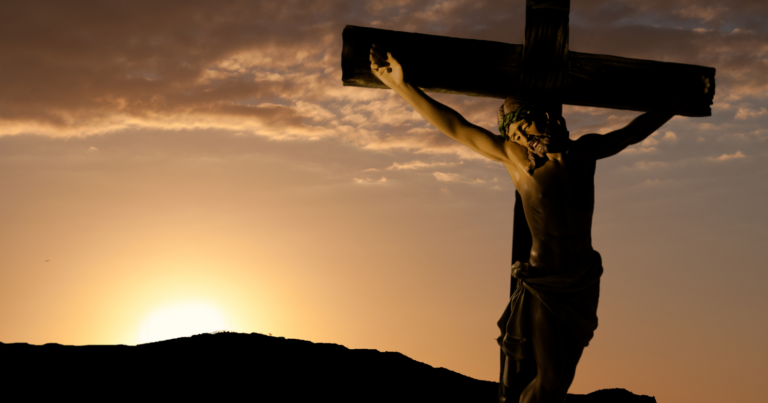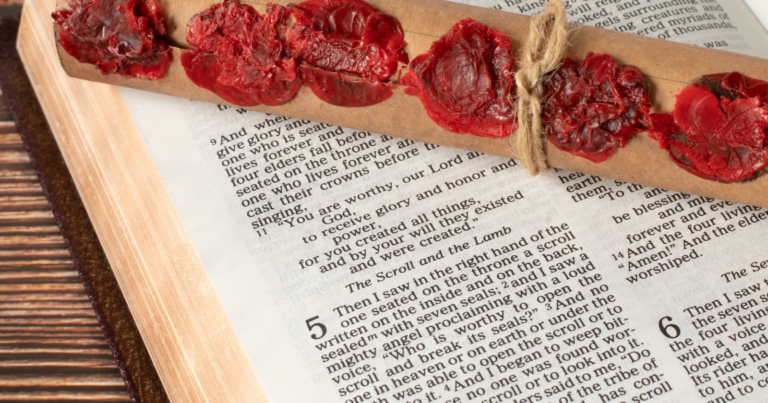“Where you go I will go, and where you stay I will stay. Your people will be my people and your God my God.”
Ruth 1:16
Few stories resonate with modern Christians as deeply as that of Ruth.
This narrative of unwavering loyalty, profound love, and divine providence speaks to the core of what it means to be human.
At its heart, Ruth’s journey from the fields of Moab to the lineage of kings unfolds lessons on the power of faith and the strength found in kindness.
Her choices illuminate the paths of humility and devotion in a way that transcends time and culture.
In this article, we delve into the timeless teachings of the Book of Ruth, exploring how her story can inspire personal and spiritual growth in our lives today.
Ruth’s timeless story
The Book of Ruth is an important historical work in Hebrew Scripture, our Old Testament of the Bible.
It’s a part of the Writings of Hebrew Scripture that traces the lineage of King David and ultimately that of the Messiah, Jesus Christ.
Ruth was a Moabite woman, whose sense of piety and devotion to her mother-in-law Naomi led to her marriage to the prominent Boaz of Bethlehem in Judah.
Ruth follows Joshua and Judges and precedes Samuel in the Historical Books of the Greek Septuagint Old Testament, and continues as such in the Latin Vulgate and our Christian Old Testament.
The Book of Ruth is called Ρουθ in the Greek Septuagint.
It unfolds the story of Ruth, a Moabite woman whose allegiance to her mother-in-law Naomi and her faith in God led her from being a foreigner to the forebear of King David.
And ultimately, it led her to be an ancestor of Jesus Christ.
Ruth’s journey from bereavement to redemption, set against the backdrop of the barley harvest in Bethlehem, encapsulates themes of loyalty, love, and divine providence.
From Moab to Bethlehem
In an era when judges ruled and famine struck the land of Bethlehem, a man named Elimelech, along with his wife Naomi and their two sons, sought refuge in the country of Moab.
This move marked the beginning of a story that intertwines tragedy with hope — starting with Elimelech’s death, followed by the loss of both sons, leaving Naomi and her Moabite daughters-in-law, Orpah and Ruth, as widows.
Amidst this sorrow, Naomi decides to return to Bethlehem upon hearing that the Lord has blessed her homeland with food.
The decision to leave Moab sets the stage for a profound display of loyalty and faith.
While Orpah chooses to stay back in Moab, Ruth makes a pivotal choice to accompany Naomi back to Bethlehem.
Ruth’s commitment is encapsulated in her heartfelt declaration:
“Where you go, I will go; your people will be my people, and your God my God.”
This moment not only defines Ruth’s unwavering loyalty to Naomi but also marks the beginning of her integration into a new community and faith.
Ruth’s teachings for your personal growth
1) Men and women are equally important to God
Ruth’s story is a powerful reminder:
Gender doesn’t limit us in the eyes of the divine.
Look at Ruth, a Moabite, stepping into a role that changes history. She’s not just a character in a narrative — she embodies equality.
By gleaning in Boaz’s fields, she asserts her place and purpose.
It’s a clear message: God values our contributions, regardless of gender.
Her actions—deciding to stay with Naomi, gleaning in the fields of Boaz, and ultimately becoming the great-grandmother of King David—highlight how God’s plan transcends human distinctions of gender.
Think about it: Ruth, a foreign woman, not only finds favor in God’s sight but also becomes an essential link in the lineage leading to Jesus Christ.
Imagine that centuries ago, a woman’s actions directly influenced the lineage of King David and Jesus. This indeed tells us something vital for today, right?
The story of Ruth beautifully illustrates the principle that men and women hold equal importance in the eyes of God.
2) Loyalty that transcends national boundaries
Now, think about Ruth’s loyalty. It’s not just about sticking by Naomi.
It’s a radical act of love that crosses national lines.
“Your people will be my people,” Ruth declares.
This isn’t just about family — it’s about choosing unity over division. Not surprisingly, this level of devotion is a key theme throughout their journey together.
Besides, this narrative subtly touches on a practice deeply rooted in history: the choice of a spouse from within one’s extended, non-blood-related family circle, a theme echoing through the ages.
The thing is that Ruth, a foreigner, embraces a new culture and faith, breaking barriers of nationality. Her story mirrors today’s global challenges, urging us to look beyond our differences.
In a world often divided, Ruth teaches us the beauty of loyalty that knows no borders. Her journey encourages us to build bridges, not walls, in our quest for a united humanity.
3) Small acts are powerful
Today, we can even consider Ruth’s story a masterclass in how small, seemingly insignificant actions can lead to monumental changes.
Sounds impressive, right?
Well, consider these acts:
- Ruth’s decision to glean leftover grains to support Naomi and herself.
- Her respect and kindness toward Naomi, despite their dire circumstances.
- Choosing to stay with Naomi rather than returning to her own family, a gesture of loyalty and love.
These actions, though small in scale, had a profound impact. They led to Ruth’s eventual marriage to Boaz and securing a place for her in the lineage of King David and, by extension, Jesus.
Let’s be honest: in our modern world, it’s easy to overlook the power of simple kindnesses.
Yet, Ruth’s story reminds us that these acts are the fibers that weave the fabric of our communities.
They foster connections, build trust, and can even change the course of history.
So, the takeaway from Ruth is that a simple act of kindness or a moment of consideration can ripple through time. And this, in turn, reminds us of our capacity to influence the world in positive, lasting ways.
4) Unity is a beacon of hope
The unity between Ruth and Naomi serves as a beacon of hope and solidarity. It symbolizes the strength found in companionship and mutual support during times of hardship and loss.
Their journey back to Bethlehem not only signifies a physical return but also marks the beginning of Ruth’s spiritual journey within a community that will come to embrace her as one of their own.
We can even say that their decision to support each other in times of uncertainty becomes a beacon of hope, not just for them but for those around them.
This unity:
- Demonstrates the strength found in solidarity, as they navigate their struggles together.
- Leads to their integration into a new community, where their shared resilience fosters further connections.
- Culminates in Ruth’s marriage to Boaz, uniting different families and even nations, showcasing the potential for reconciliation and peace.
In our current era, where division often seems more common than unity, Ruth’s narrative offers a powerful counter-narrative.
It shows that when we come together, support one another, and act as one, we can overcome obstacles that seem insurmountable.
Unity, Ruth teaches us, is not just a strategy for survival. It’s a pathway to thriving, a source of strength, and a wellspring of hope.
5) Social justice matters
Finally, Ruth’s acceptance into Boaz’s field and her inclusion in the Israelite community highlight themes of social justice and inclusivity.
Her story unfolds in a society with laws designed to protect the vulnerable, such as the practice of gleaning, which allowed the poor to gather leftover grain.
Let’s be honest, this provision is more than an act of charity. It’s an acknowledgment of the inherent dignity and worth of every individual.
Through Ruth, a foreigner, and a widow, the scripture highlights the importance of inclusivity and care for the marginalized.
Ruth’s experience calls us to action, urging us to look beyond our immediate circles and recognize the value in every person.
It’s a reminder that justice isn’t just about grand gestures — it’s built through daily acts of kindness, fairness, and support.
The narrative prompts a reflection on how society treats foreigners, widows, and the less fortunate, encouraging actions that reflect God’s love and compassion towards all.
What are the main parts of the Book of Ruth?
If you’re planning to dive into the Book of Ruth, understanding its structure can greatly enrich your reading experience.
Here’s a concise guide to its four chapters:
- Chapter 1: Naomi’s loss and Ruth’s loyaltyNaomi, widowed and bereaved of her two sons, decides to return to Bethlehem. Ruth, her Moabite daughter-in-law, insists on staying with her, showcasing profound loyalty and commitment to Naomi and her God.
- Chapter 2: Ruth’s work and Boaz’s kindnessIn Bethlehem, Ruth gleans in the fields of Boaz, a relative of Naomi’s late husband. Boaz extends kindness and protection to Ruth, reflecting God’s provision through human actions.
- Chapter 3: Ruth and Boaz at the threshing floorFollowing Naomi’s advice, Ruth seeks Boaz on the threshing floor, asking him to act as her kinsman-redeemer. This bold move sets the stage for their future together, emphasizing themes of redemption and protection.
- Chapter 4: The RedemptionBoaz marries Ruth after resolving a legal matter with a close relative. Their union brings joy to Naomi and leads to the birth of Obed, David’s grandfather, integrating Ruth into the lineage of Israel and highlighting the book’s themes of restoration and divine providence.
Final words: Navigating your journey with Ruth
As you can see, the Book of Ruth offers profound insights into the themes of loyalty, providence, redemption, and the inclusive nature of God’s kingdom.
Ruth’s story is not just historical — it is a mirror reflecting the enduring human quest for belonging, purpose, and divine connection.
For those seeking to navigate the next stages of their learning journey with the Book of Ruth, consider these steps:
- Reflect on the character qualities of Ruth and Naomi. What aspects of their faith and actions can you apply to your own life?
- Study the cultural and historical context of the period when The Book of Ruth was set. Understanding the societal norms and challenges of that time can provide a deeper appreciation of the story’s significance.
- Examine the lineage of David and Jesus Christ, noting how Ruth’s story is interwoven into God’s grand plan for humanity. This can offer insights into the importance of every individual in fulfilling divine purposes.
- Engage with commentaries or sermons on The Book of Ruth. After all, many theologians have explored its themes, and their perspectives can enrich your understanding.
By pursuing these avenues, you’ll not only gain a deeper understanding of The Book of Ruth but also how its timeless lessons can influence your spiritual life today.












